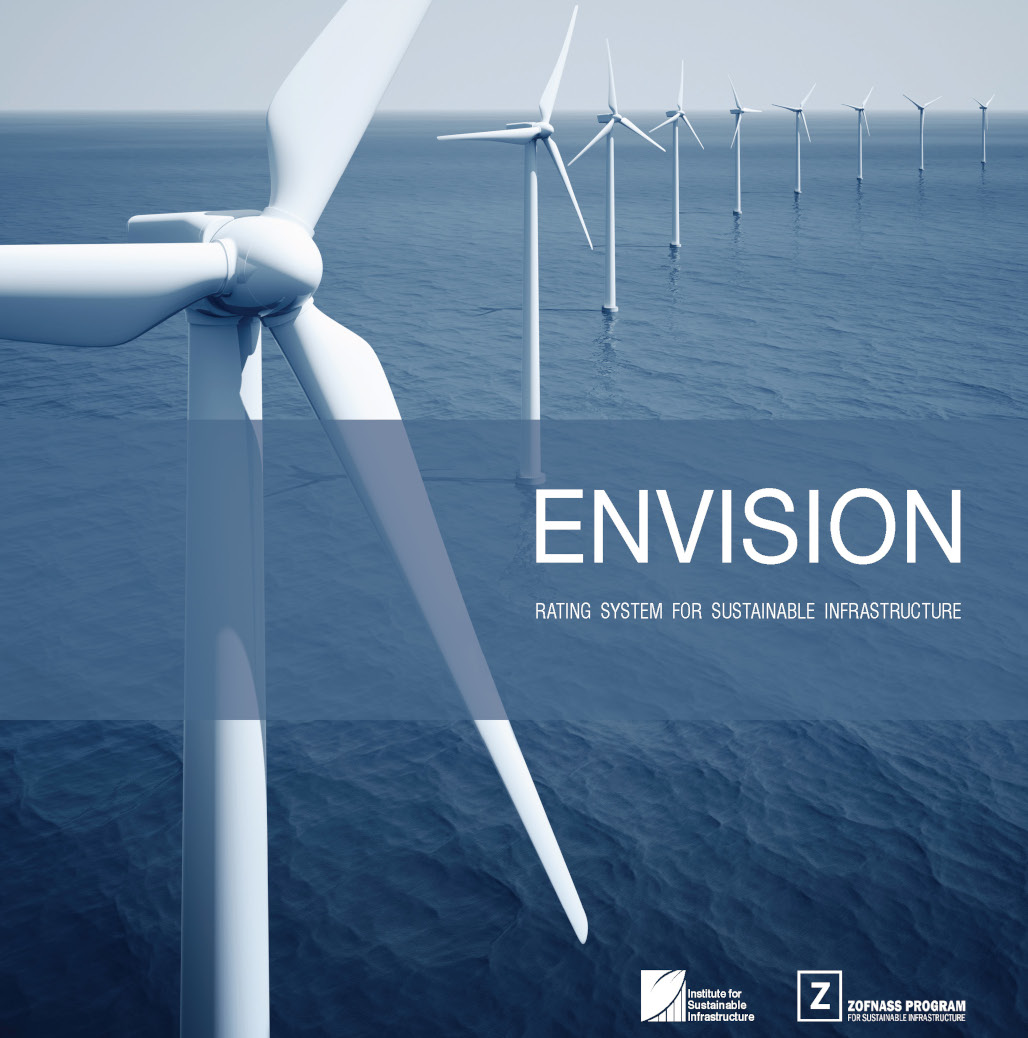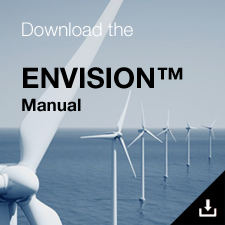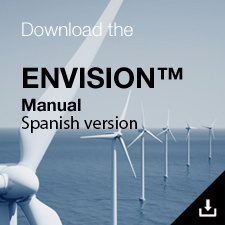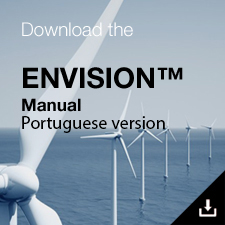Envision is the product of a joint collaboration between the Zofnass Program for Sustainable Infrastructure at the Harvard University Graduate School of Design and the Institute for Sustainable Infrastructure. The Institute for Sustainable Infrastructure and the Harvard Zofnass Program at Harvard University continue their collaboration towards further developing Envision, for disseminating Envision in the USA and worldwide, and in research projects related to the sustainability of infrastructure and the sustainability of cities.


Envision® system
Development of Envision
The core of Envision was developed by the Zofnass Program at Harvard, starting in 2008. ZPH worked together with the Institute for Sustainable Infrastructure (ISI), after ISI was founded in 2011, on the system that ZPH had already developed to create Envision. This state-of-the-art, holistic sustainability rating system and planning guide allows professionals to plan and execute sustainable infrastructure projects.
ISI was founded by the American Public Works Association (APWA), the American Society of Civil Engineers (ASCE), and the American Council of Engineering Companies ACEC). Based in Washington, DC, the nonprofit 501 (c) (3) organization has a single purpose: to develop and maintain a sustainability rating system for all types of civil infrastructure. Today, ISI counts thousands of individual practitioners, government agencies, companies, and other organizations as members. Located worldwide, these individuals and organizations are actively using Envision.
ISI provides access to Envision at no cost. For a fee, ISI offers online training to individuals in applying Envision, after which they can earn the ENV SP (Envision Sustainability Professional) credential, and offers a verification and award program for projects.
ISI, as a member of the SIAB of the ZPH, advises on the research of the ZPH. Furthermore, the ZPH and ISI continue working together, complementing each other, towards further developing Envision and disseminating Envision in North America and worldwide. They share a common leadership at multiple levels, complementing each other. The ZPH focuses on research and on expanding the frontier of knowledge on sustainability in the built environment, with its research guided by the industry and ISI’s trajectory and needs. ISI addresses the sustainability needs of public agencies and engineering companies by providing a quantifiable reference and a target for sustainability via Envision, aswell as training and rating of projects.
Envision Credits
1 PURPOSE
QL1.1 Improve Community Quality of Life
QL1.2 Stimulate Sustainable Growth and Development
QL1.3 Develop Local Skills and Capabilities
2 WELLBEING
QL2.1 Enhance Public Health and Safety
QL2.2 Minimize Noise and Vibration
QL2.3 Minimize Light Pollution
QL2.4 Improve Community Mobility and Access
QL2.5 Encourage Alternative Modes of Transportation
QL2.6 Improve Accessibility, Safety and Wayfinding
3 COMMUNITY
QL3.1 Preserve Historic and Cultural Resources
QL3.2 Preserve Views and Local Character
QL3.3 Enhance Public Space
QL0.0 Innovate or Exceed Credit Requirements
1 COLLABORATION
LD1.1 Provide Effective Leadership & Commitment
LD1.2 Establish a Sustainability Management System
LD1.3 Foster Collaboration and Teamwork
LD1.4 Provide for Stakeholder Involvement
2 MANAGEMENT
LD2.1 Pursue By-Product Synergy Opportunities
LD2.2 Improve Infrastructure Integration
3 PLANNING
LD3.1 Plan Long-Term Maintenance and Monitoring
LD3.2 Address Conflicting Regulations and Policies
LD3.3 Extend Useful Life
LD0.0 Innovate or Exceed Credit Requirements
1 MATERIALS
RA1.1 Reduce Net Embodied Energy
RA1.2 Support Sustainable Procurement Practices
RA1.3 Use Recycled Materials • RA1.4 Use Regional Materials
RA1.5 Divert Waste from Landfills
RA1.6 Reduce Excavated Materials Taken Off Site
RA1.7 Provide for Deconstruction and Recycling
2 ENERGY
RA2.1 Reduce Energy Consumption
RA2.2 Use Renewable Energy
RA2.3 Commission and Monitor Energy Systems
3 WATER
RA3.1 Protect Fresh Water Availability
RA3.2 Reduce Potable Water Consumption
RA3.3 Monitor Water Systems
RA0.0 Innovate or Exceed Credit Requirements
1 SITING
NW1.1 Preserve Prime Habitat
NW1.2 Preserve Wetlands and Surface Water
NW1.3 Preserve Prime Farmland
NW1.4 Avoid Adverse Geology
NW1.5 Preserve Floodplain Functions
NW1.6 Avoid Unsuitable Development on Steep Slopes
NW1.7 Preserve Greenfields
2 LAND AND WATER
NW2.1 Manage Stormwater
NW2.2 Reduce Pesticides and Fertilizer Impacts
NW2.3 Prevent Surface and Groundwater Contamination
3 BIODIVERSITY
NW3.1 Preserve Species Biodiversity
NW3.2 Control Invasive Species
NW3.3 Restore Disturbed Soils
NW3.4 Maintain Wetland and Surface Water Functions
NW0.0 Innovate or Exceed Credit Requirements
1 EMISSIONS
CR1.1 Reduce Greenhouse Gas Emissions
CR1.2 Reduce Air Pollutant Emissions
2 RESILIENCE
CR2.1 Assess Climate Threat
CR2.2 Avoid Traps and Vulnerabilities
CR2.3 Prepare For Long-Term Adaptability
CR2.4 Prepare for Short-Term Hazards
CR2.5 Manage Heat Island Effects
CR0.0 Innovate or Exceed Credit Requirements
Envision v2 system
Envision is the product of a joint collaboration between the Zofnass Program for Sustainable Infrastructure at the Harvard University Graduate School of Design and the Institute for Sustainable Infrastructure. The Institute for Sustainable Infrastructure and the Harvard Zofnass Program at Harvard University continue their collaboration towards further developing Envision, for disseminating Envision in the USA and worldwide, and in research projects related to the sustainability of infrastructure and the sustainability of cities.
The Envision system is a set of guidelines that aid in optimizing the sustainability of an infrastructure project during the planning and preliminary design phases, as well as a means to quantify the relative sustainability of the project. Although several rating systems are widely used to analyze the sustainability of individual buildings, no rating system for assessing the sustainability of infrastructure projects has gained widespread adoption. The lack of a common rating system is especially troubling because of the significant impacts infrastructure projects and networks have on the environment.
What LEED™ has done for building-scale sustainability, Envision aims to do for infrastructure: educate citizens and increase public awareness, provide a means to quantify sustainability in infrastructure, and facilitate the adoption of sustainable design for infrastructure.















